The Geisha variety was originally collected from the coffee forests in Ethiopia in the 1930s. It was then sent to the Lyamungu Research Station in Tanzania and brought to the Centro Agronómico Tropical de Investigación y Enseñanza (Tropical Agricultural Research and Higher Education Center CATIE) in Costa Rica in 1953, but was recorded as T2722. After people realized the tolerance of this variety to coffee leaf rust, it was distributed to Panama for planting through CATIE in the 1960s. However, because the branches of this variety of plant are very fragile and not favored by farmers, it has not been widely planted. It wasn't until 2005 that the Emerald Estate used the Geisha variety to participate in the BOP competition and bidding. The exceptionally high score made this bean famous.
However, in addition to Panama, countries such as Costa Rica and Colombia also grow Geisha, but when it comes to Geisha, the Geisha Village Estate in Ethiopia has to be mentioned.
Gesha Village Coffee EstateIn 2007, director Adam Overton and his photographer wife Adam Samuel were in the process of filming a documentary about Ethiopian coffee for the Ethiopian government, they came into contact with the Bench Maji area in the far west of Ethiopia, close to South Sudan. They discovered the Gori Gesha Forest in this area, which gave them the idea of creating their own coffee estate and brand. In 2009, they met Willem Boot, the owner of the mule estate and a BOP judge, and Willem Boot's idea also provided an opportunity for the Overtons. They returned to Ethiopia to search for the birthplace of Geisha and finally arrived in Bench Maji. There are many places in this area called Gesha Village, which may be the original area of Geisha. They searched in the forest around the estate and found wild Geisha, and later learned that this was the place where Geisha was first discovered. So they collected seeds from the native Geisha, screened them, and then planted them in the Geisha Village. They decided to establish the estate here, a 475-hectare coffee farm about 12 miles from the Gori Gesha Forest, and named it Gesha Village Coffee Estate.
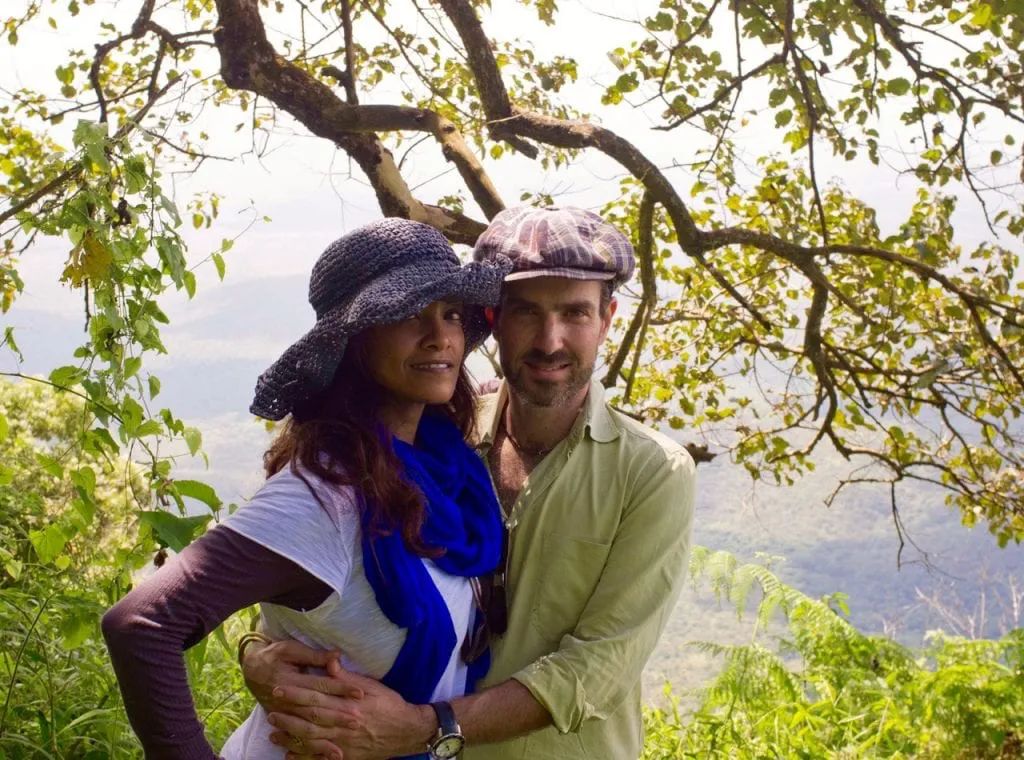
There are three varieties in Geisha Village, Gesha1931, Gori Gesha, and Illubabor.
Gesha1931 (G31) traces back to the source of Geisha. It was collected together from the Geisha Forest in Ethiopia by the British border in 1931 and went through several twists and turns to reach Panama. Later, the native variety of Geisha found by Adam Overton and Willem Boot near the estate is very similar to the variety of Panama Geisha in terms of genetic comparison, so it is named Geisha1931.
The discovery of Gori Gesha (GG) was in 2011. After Adam and his wife established the Geisha Village Estate, a type of bean very similar to Geisha was found in the Gori Gesha Forest 12 miles away. Since it was discovered in the Gori Gesha Forest, it was named "Gori Gesha".
Illubabor Forest 1974 (IF) was discovered during an investigation in the Illubabor Forest in 1974 and was later developed by the Ethiopian Research Center as a variety with antibodies.
Geisha Village is divided into eight plots, and only one variety is planted in each plot, so the variety can be identified by the plot. Oma, surma, and narsha plots are planted with Geisha1931, while the bangi, shewa-jibabu, and shaya plots are planted with Gori Gesha, and finally, the gaylee and dimma plots are planted with Illubabor.
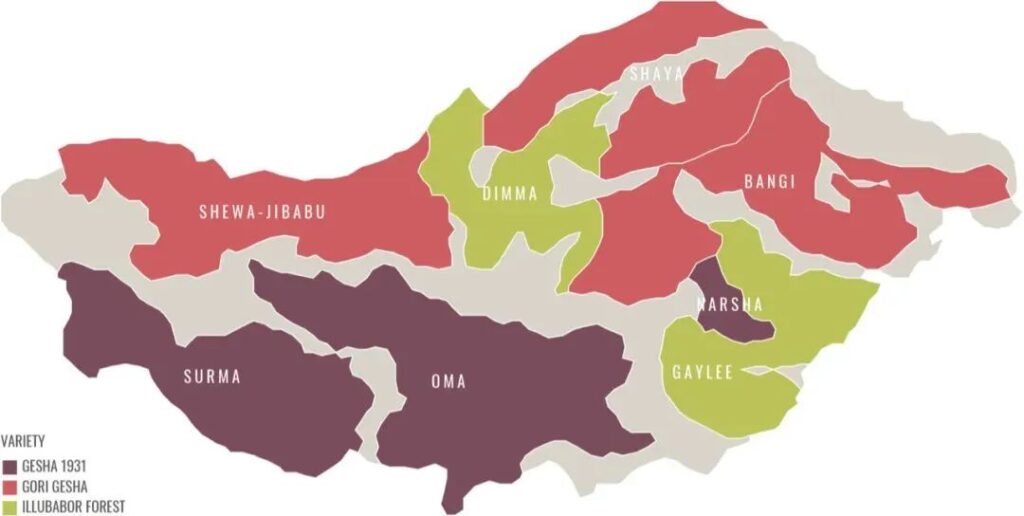
Originally, there were no estates in Ethiopia. When Adam and his wife opened the Geisha Village Estate, they brought the management model of Panamanian coffee estates here. Therefore, Geisha Village Estate is also divided into plots, and the plot numbers are detailed, which is convenient for later management and traceability.
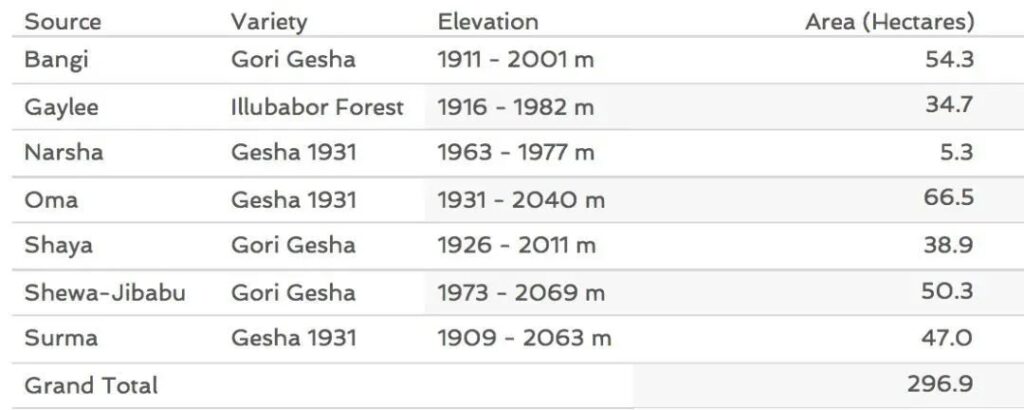
In terms of grading, there are bidding batches, which account for 3.7% of the annual output of Geisha Village, and can only be obtained through the global bidding of Geisha Village Coffee Estate. The RARITIES label batch is second only to the bidding, accounting for 5% of the annual output of the estate. The RROWERS RESERVE label batch is second only to the RARITIES label, and the cup test score needs to exceed 88 points, which is also a single-item batch with a higher cost performance. There is also a single-terroir label batch, which only provides traceability information but has no cup test score requirements. Finally, there is a Chaka batch, which is a Geisha blend, using the three Geisha varieties in the estate and mixed plots, namely Gori Gesha, Geisha1931, and Illubabor.
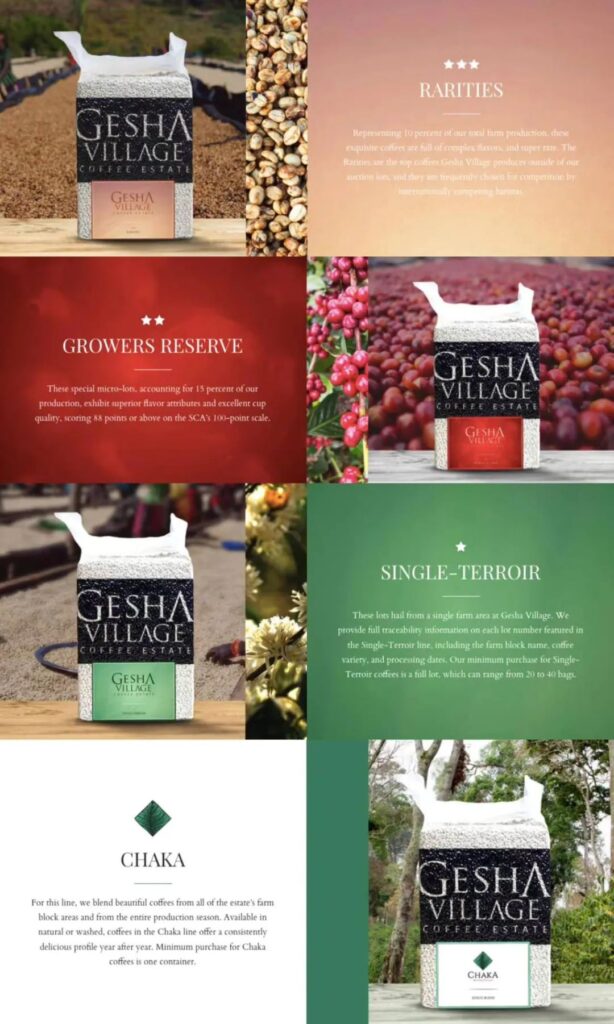

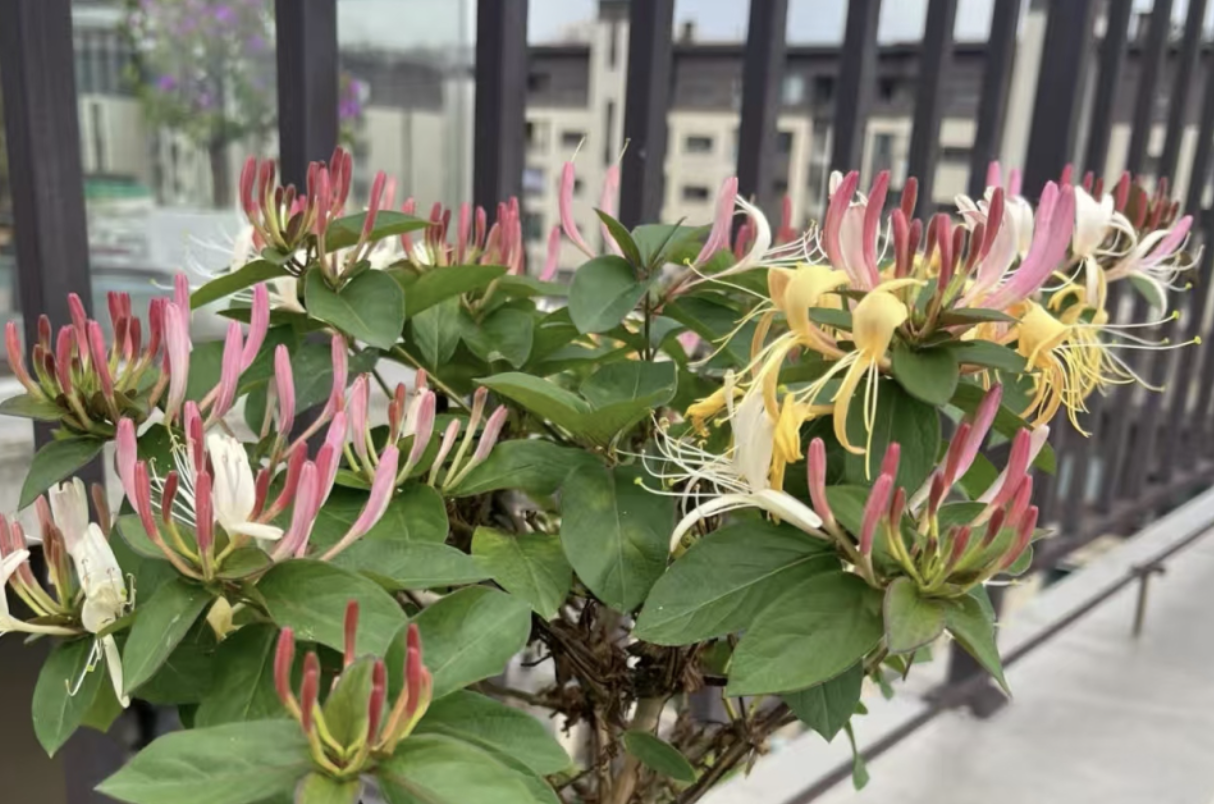
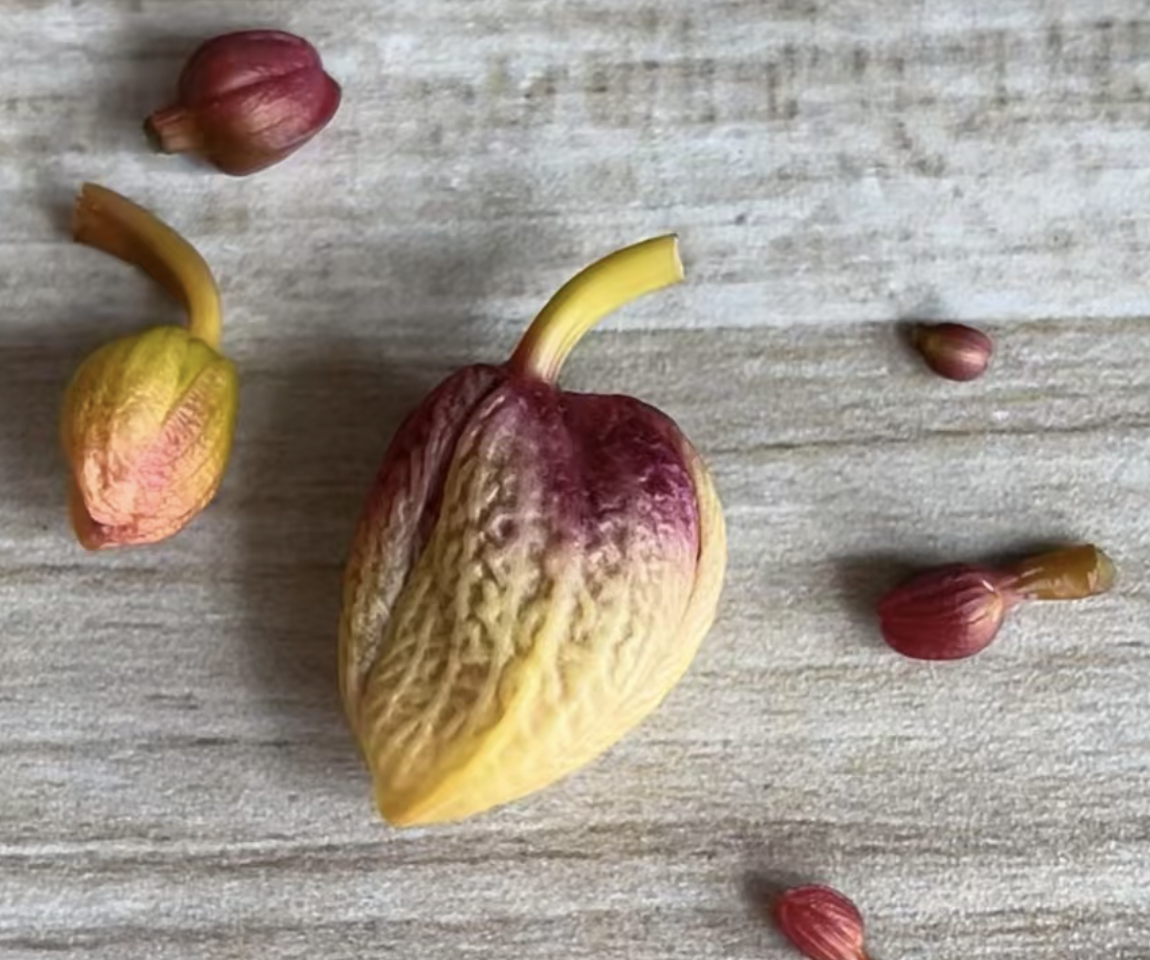
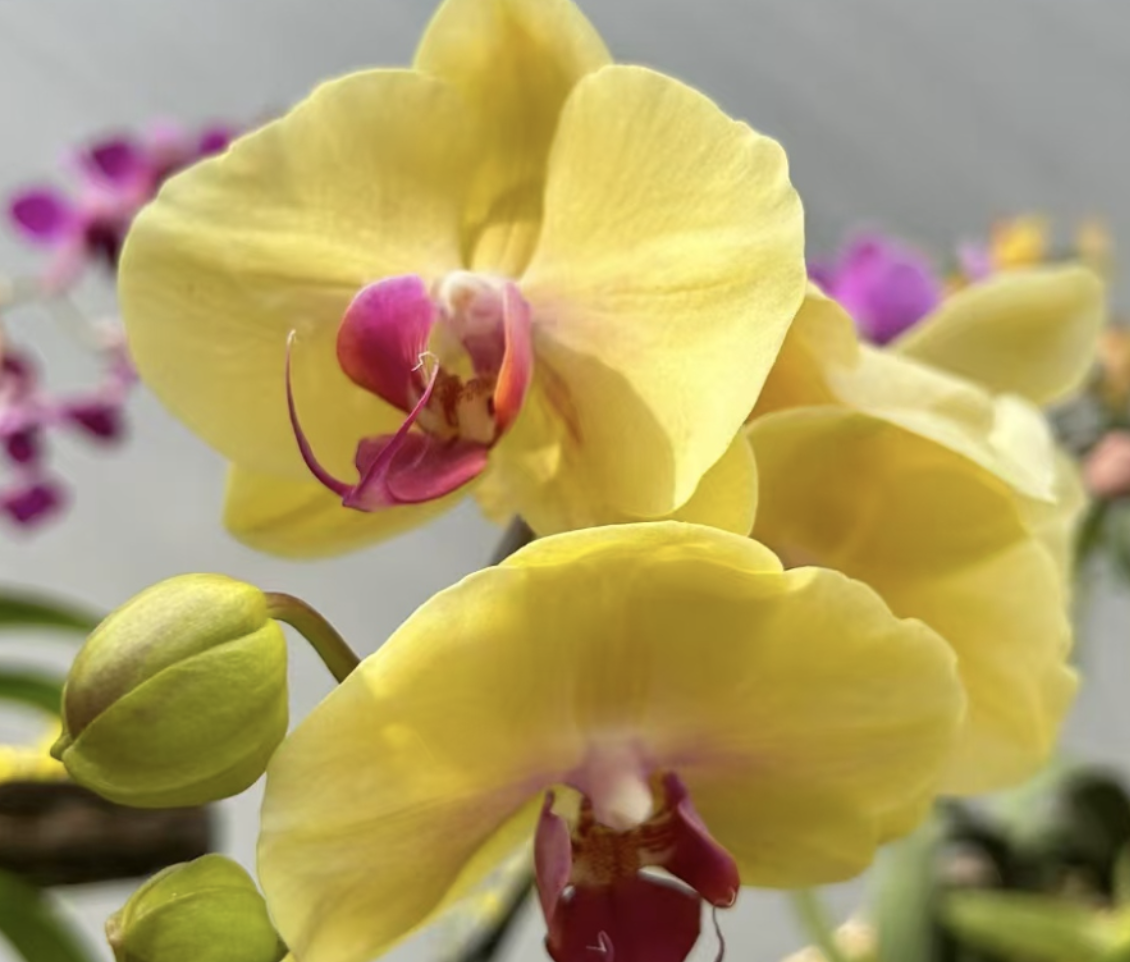
Leave a Reply